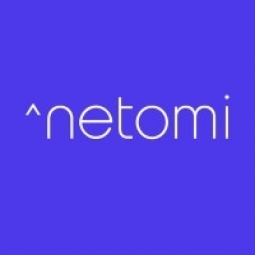技术
- 应用基础设施与中间件 - 区块链
- 基础设施即服务 (IaaS) - 虚拟私有云
用例
- 需求计划与预测
关于客户
Simplex by Nuvei 是一家自 2014 年以来一直在彻底改变加密货币购买方式的公司。Simplex 总部位于以色列,为复杂的加密货币生态系统提供完整的法定基础设施。该公司了解即时客户互动的重要性,尤其是在加密货币这个微妙且高风险的行业。 Simplex 优先考虑客户体验,旨在以个性化方式轻松、即时地为客户提供帮助。该公司平均每月处理 55,000 张门票,每日门票量根据当前市场和加密货币需求而变化很大。
挑战
Nuvei 旗下的 Simplex 是一家为复杂的加密货币生态系统提供完整法定货币基础设施的公司,由于需求激增且不可预测,该公司在管理客户服务方面面临挑战。该公司每月平均处理 5.5 万张票,每日票量变化很大,有时低至 500 张,有时高达 8,000 张。加密货币行业全天候运营的特点要求无论票量如何,都要采取一致的支持策略。为了在不增加员工人数的情况下扩大规模,Simplex 需要将 AI 融入其员工队伍中。
解决方案
Simplex 与 Netomi 合作,Netomi 是一家人工智能公司,以其卓越的自然语言理解 (NLU)、全渠道功能以及与 Zendesk 的本机集成而闻名。他们共同推出了人工智能驱动的虚拟助理 Sarah 来处理客户的查询。 Sarah 旨在自动解决电子邮件和身份验证、通用加密货币购买问题、检查付款状态以及基本技术故障排除等查询。这导致响应时间显着缩短,从 2 分钟缩短到仅 10 秒。 Sarah 最初解决了大约 22% 的范围内故障单,但六个月后,总体偏差率几乎翻了一番,达到 40%,并且每周都有改善。
运营影响
数量效益

Case Study missing?
Start adding your own!
Register with your work email and create a new case study profile for your business.
相关案例.

Case Study
Gexa Energy and AutoGrid's Innovative Demand Response Programs in ERCOT
Gexa Energy, a leading retail electricity provider in Texas, was seeking to introduce new demand response programs for its commercial and industrial customers in the Electric Reliability Council of Texas (ERCOT) market. The challenge was to provide a platform that would allow these customers to lower their energy bills by adjusting their energy consumption during peak energy demand or high wholesale electricity prices. The solution needed to be intelligent, scalable, and offer both manual and automated options for adjusting energy consumption. The demand response programs needed to include Emergency Response Service (ERS), Real-Time Price Response (RTPR), and 4 Coincident Peak (4CP).

Case Study
ZettaNet's Agile Juniper Network Meets Booming Digital Demand in Australia
ZettaNet, a privately-held company based in Perth, Australia, was facing a significant challenge due to the exponential demand for enterprise network, data center, and cloud services in the region. The company's business growth necessitated an upgrade of their core network to meet the increasing bandwidth requirements of their customers. The customers, which primarily include managed service providers, were demanding 1 Gbps connectivity between locations. These service providers then deliver network, data center, cloud, and voice services to a diverse range of customers including local businesses, schools, hospitals, residential communities, and government offices in Western and Southern Australia. The challenge for ZettaNet was to meet this high-capacity network services demand while maintaining profitability.

Case Study
Edge AI: Deploying AI Flexibility in a Virtualized LV/ MV Substation
Cuerva a Spanish Grip Operator, was seeking to enhance grid knowledge through the implementation of the AI Energy Forecasting Model to obtain precise forecasts of user demand and energy generation.Cuerva’s grid encompasses over 16,000 diverse supply points, making cloud-based operations intricate and susceptible to issues such as connectivity loss, delays in information transmission, and reliance on centralized infrastructure, which can result in the loss of critical data.To tackle these challenges, the Edge technology has proven to be the sole alternative capable of addressing these issues effectively. It ensures real-time data access and operates in a decentralized manner, minimizing the impact of device failures on the overall functionality of the network.In this successful case, we illustrate how with Barbara DSOs can implement AI directly in substations to accurately predict the demand and production values of consumers linked to the transformation center where an Edge node run by Barbara has been deployed.
Case Study
MISA's Success in Achieving 50% Query Deflection Rate with Freshdesk
MISA, an online fashion retailer, faced a significant challenge in managing customer support and communication during the COVID-19 pandemic. The shift in consumer behavior towards online shopping led to an explosive growth in digital footfall, increasing MISA’s average number of orders from 30-50 a day to about 70-100 a day. This surge in orders resulted in higher support volumes, with customers frequently enquiring about their orders and delivery status. The team struggled to prioritize issues as their existing email systems ordered conversations based on the latest response rather than the urgency of the queries. Additionally, the shift to remote work due to the pandemic raised concerns about effective team collaboration and communication. MISA also faced the challenge of dealing with repetitive customer queries, which were time-consuming and redundant.
Case Study
Book Creator: Transforming Education through Digital Book Creation
Book Creator, a self-publishing tool, aimed to shift its focus towards serving the K-12 market and enhance student engagement by unlocking their creativity. The company wanted to provide a platform where students and teachers could collaboratively create and publish ebooks and learning materials. However, with a small team of 13, they faced the challenge of reaching millions of students and handling high-variability workloads. Additionally, they needed to comply with strict data access management requirements including GDPR in the European Union and FERPA/COPPA in the U.S. The company also wanted to rapidly develop new features while reducing the complexities of storing data and scaling access to it.
Case Study
MARS Incorporated: Leading a Global Digital Transformation
MARS Incorporated, a multinational manufacturer, faced significant challenges in digitizing and standardizing processes across its mid-markets globally. The company's reliance on legacy solutions necessitated continuous, time-consuming upgrades and made data compilation and comparison across different regions and business units difficult. Excel spreadsheets were extensively used for forecasting in smaller markets, leading to disconnected processes, siloed working environments, and increased risk of data inconsistencies and inaccuracies in demand forecasting. MARS also struggled with a lack of visibility across its midmarket footprint, scattered critical data across various systems and spreadsheets, a low degree of automation, and insufficient statistical analytics for demand planning. The absence of a standard process for demand planning made it challenging to consolidate KPIs and gain a comprehensive view of demand trends and supply chain performance.



